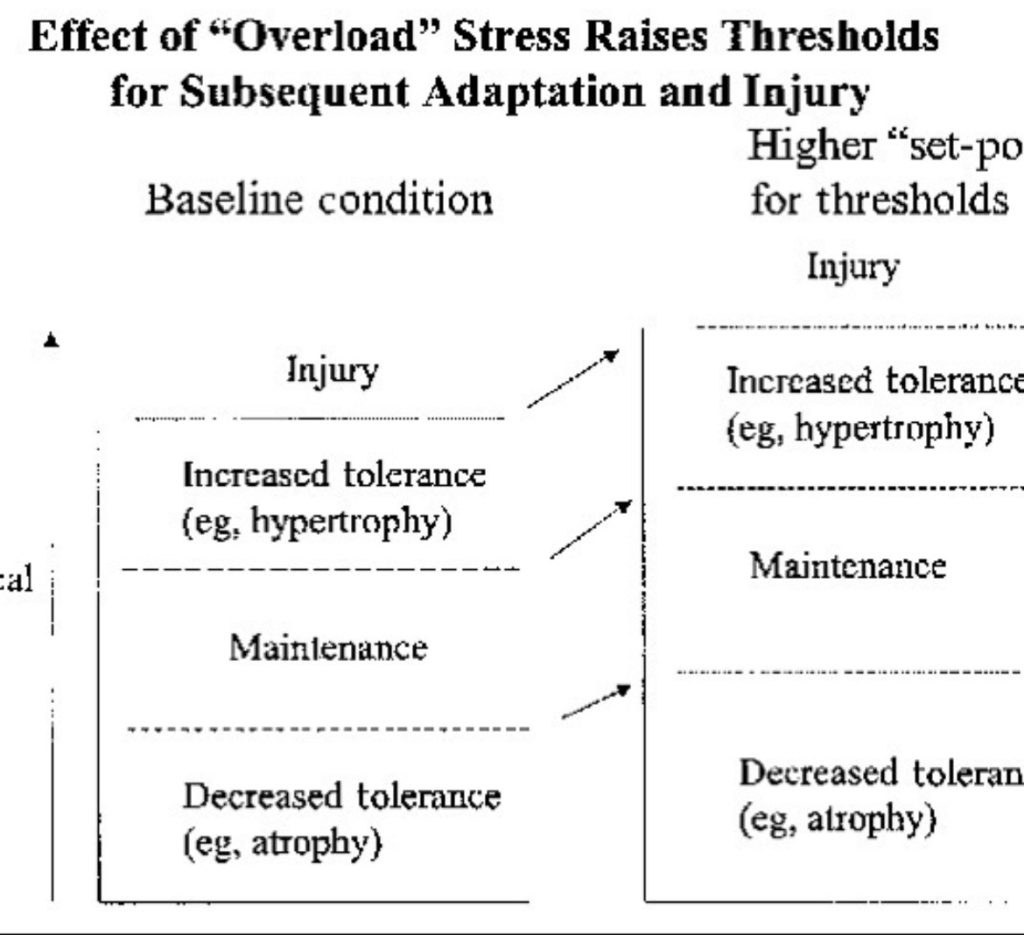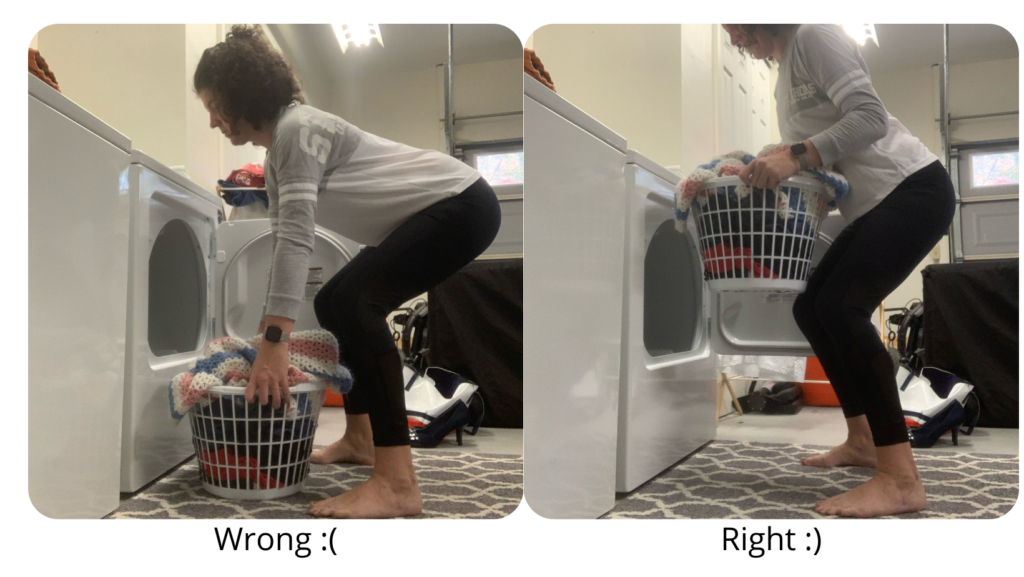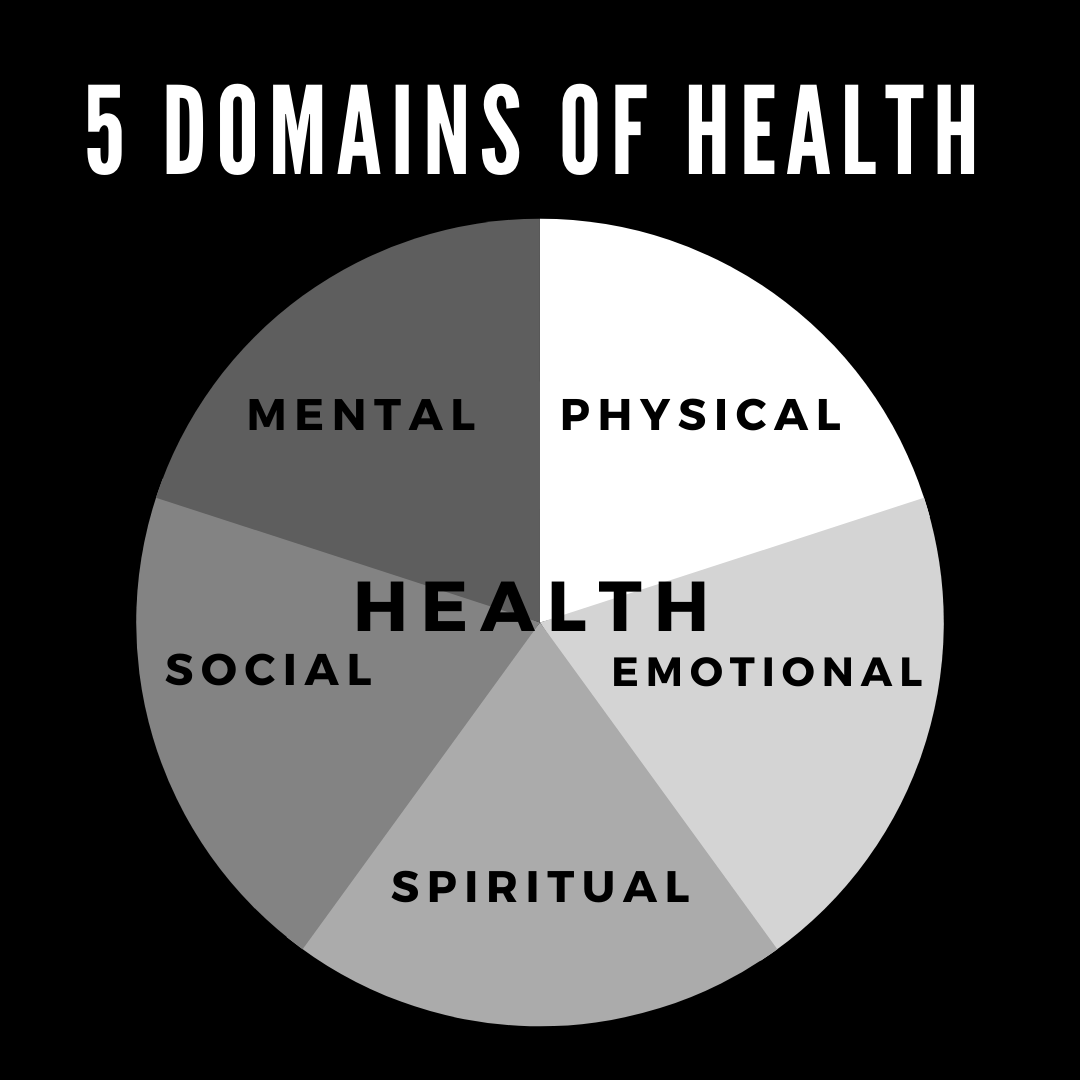Most of us will experience back pain at some point in our lives. At any given time, up to half of us are dealing with it, and it’s the most common reason given for missing work and recreational activities. So how do you prevent low back pain from getting in the way of your exercise routine?
Keep reading!
1. Perform a dynamic warm up.
Your warm up should be specific to the activity you are doing. Enter the dynamic warm up. In short, you should move your body slowly through the movements you perform during your activity. This ensures that your joints and muscles are moving through their full range ask your body to perform higher level activities, will help to decrease your chances of pain or injury.
It’s essential to make sure that your warm up movements mimic the moves that you will need to perform during your exercise. This is what most people don’t realize is key to success.
For instance, if you are going to be running, a combination of high knees, heel and toe walks, mini lunges with trunk rotation, and a walking hamstring stretch would be a good starting point. Depending on your activity, you can design your warm up to be specific to your activity which is key to limit injury.
These will help your back muscles and joints be able to warm up slowly and prepare to handle the demands of the activity you are doing. Speaking of demands…
2. Don’t blow past your current tolerance to exercise.
Pace yourself with activity. If you are starting from scratch, start slow and assess your body’s tolerance. You want to slowly build vs going zero to sixty right away. If you are sore for longer than 24 hours after your work out, you have pushed a bit too far. Especially, if in addition to routine muscle soreness, you are experiencing increased back pain. If you do too much too quick, at best it can actually hinder your performance. At worst, it can lead to increased injury risk and make aches and pains flare for a longer period. We want to avoid this at all costs because once the alarm system is going off, it takes a lot longer to calm it down.
How Do You Increase Tolerance Safely?
To understand how to increase tolerance, you must first understand physical stress theory. Basically it says that gradually increasing resistance over time will lead to increased tolerance in our body tissues. If you’re visual like me, the graphic below will help.

In order to make this happen, we must understand what variables you can change to make a workout harder or easier.
The most common are weight, reps, distance (volume), and time (frequency).
A general rule of thumb is that you should increase one of these variables at a time and then assess your response. For instance, if you are lifting weights, increase the weight by about 2.5 lbs per week. Increasing weight and reps at the same time could increase your risk of overdoing it. With running, the general rule of thumb is to increase mileage by no more than 10% per week. Following these principles can help lower your risk of overtraining, which could flare a back problem. If you want help, we can make you a custom plan.
3. Use Proper Technique With Lifting
Using proper lifting techniques is not just for lifting a heavy weight at the gym, it’s for all of the lifts you do daily. Without proper technique, the back can fatigue more quickly. This increases your chances of flaring up an injury when you do something that demands more of your body (i.e. exercise). Let’s talk about things you do unconsciously do in your everyday that involve lifting.
Everyday Lifts
These are important because you do them repetitively over time. Decreasing the work through your back will help to protect it.
How do you pull out the trash bag from the kitchen bin to take it to the curb? You probably bend over at the waist and lean over the bin, grab the ties and pull straight up right? Well that’s one way to do it, but if your back is already tight and inflamed, its gonna add more strain to the area. Which might make you drop the trash bag or scream out, leaving you with a freaked out family and a mess to clean.
If you’re a parent, you’re constantly lifting from the crib or placing in a carrier to put the kids in the car. Due to how far you have to reach, you’re in an awkward position to lift them. Bonus points if you don’t disturb or wake them. Another thing that you constantly lift is a laundry basket, and depending on the size of your family, these can be quite large. When you think about all of these lifts that you do daily, you can see why it’s important to get it right.
Proper Lifting
We want you to avoid straining your back at all costs.
When you go to pull out the trash, we want you to engage your core, get close to what you’re lifting, bend at the knees and hips slightly. Once you have a good grip then we want to extend your legs and pull up. This is taking the load off the back and use your glute and leg muscles to help facilitate the movement.

When squatting to pick up a basket or object from the floor, we want to avoid any strain to the spine and any jerky motions. Smooth and controlled is the name of the game. Make sure that you’re as close to the object you’re lifting as possible. If you are farther away, you have to bend way too far which stretches out the spine muscles. This puts them in a position to have to work really hard. We want to engage our core and use our legs muscles to do most of the lifting. Look at the proper photo sequence compared to the wrong one.

When we put the excessive strain on the back and don’t utilize our core or legs muscles properly, the back can only take on so much. We have to change our mechanics and utilize muscles working together to maximize our function in our every day activities. If you are not sure how to change your habits, let’s talk. Click here to reach out!
4. Cross train To Improve Balance Among Muscle Groups
Make sure you are challenging your body in multiple ways, not just loading up on one activity, which can lead to imbalances over time. We often see this with our clients who are doing endurance type activities like biking, hiking, running, or swimming. Because you’re only moving forward, muscle groups on the front of the body can tend to get overworked and shortened. The muscles on the back of the body tend to become weaker over time in most people which can lead to inefficient movements and fatigue.
This is why it’s important to train yourself to move in all planes so you achieve balance. And, it’s the reason why all of our programs include rotational and lateral movements to keep you strong. Don’t neglect the muscles that help stabilize you during your favorite activities. Often, these are your glutes and core. The glutes are a huge contributor and stabilizer for when you pivot, change direction, stand on one foot and move fast. If your glutes are weak, it causes strain down the leg to the knee and even the ankle or up to the back. The core is a main contributor on how you breathe, stabilize your trunk and posture during movement. If your core doesn’t have the endurance to perform your activity, you will feel it else where. You might not even be able to perform your activity to the highest level and who wants to do that?
If you are unsure how to cross train your muscles for your specific activity, seek professional advice. It’s best to have a professional to give you clarity that what you’re doing is right.
5. Get A Movement Assessment To Determine Vulnerable Areas
Have a movement professional who knows how to assess weaker areas in the body perform a thorough assessment and give you a personalized plan based on how your body moves. Anyone can make educated guesses, or find something on WebMD but having someone who is trained to make a specific plan for you is the key here. We can take into all your history, any past surgeries or limitations that would be contributing to why a cookie cutter plan isn’t the right fit for you.
We offer movement screens which takes into account of how your body responds and takes on load. Depending on your goal, we can make a specific plan for you to reach your goal and do it the most efficiently way possible.
Having a professional who can cut down the stress involved by giving you answers and being a resource for you can be a game changer. How much is actually achieving your goal worth to you?
Click here to schedule a FREE discovery call so we can discuss how to get you on the road to doing all of your favorite activities comfortably!
(c) [2021] [ Intuitive Choice Physical Therapy and Wellness]







